Smart Manufacturing Processes of Low-Tortuous Structures for High-Rate Electrochemical Energy Storage Devices
Abstract
1. Introduction
2. Template-Directed Manufacturing for Low-Tortuous Structures
2.1. Anodic Aluminium Oxide Templated Methods
2.2. Bio-Derived Templated Methods
2.3. Bubble Templated Methods
2.4. Templated Phase Inversion Methods
3. Low-Tortuous Structural Design via Cooling or Heating
3.1. Directional Freezing Methods
3.2. Evaporation-Induced Methods
4. Magnetic/Electric/Shear-Field-Assisted Manufacturing for Low-Tortuous Electrodes
4.1. Magnetic-Field-Assisted Methods
4.2. Electric-Field-Assisted Methods
4.3. Shear-Field-Assisted Methods
5. Low-Tortuous Electrodes Enabled by Advanced Printing
5.1. Additive Manufacturing Methods
5.2. Stamping Methods
6. Top-down Manufacturing Process for Low-Tortuous Electrodes
6.1. Laser Drilling Methods
6.2. Etching Methods
6.3. Cutting Methods
7. Summary and Outlook
Author Contributions
Funding
Data Availability Statement
Conflicts of Interest
References
- Cano, Z.P.; Banham, D.; Ye, S.; Hintennach, A.; Lu, J.; Fowler, M.; Chen, Z. Batteries and Fuel Cells for Emerging Electric Vehicle Markets. Nat. Energy 2018, 3, 279–289. [Google Scholar] [CrossRef]
- Kwade, A.; Haselrieder, W.; Leithoff, R.; Modlinger, A.; Dietrich, F.; Droeder, K. Current Status and Challenges for Automotive Battery Production Technologies. Nat. Energy 2018, 3, 290–300. [Google Scholar] [CrossRef]
- Liu, Y.; Zhu, Y.; Cui, Y. Challenges and Opportunities towards Fast-Charging Battery Materials. Nat. Energy 2019, 4, 540–550. [Google Scholar] [CrossRef]
- Schmuch, R.; Wagner, R.; Hörpel, G.; Placke, T.; Winter, M. Performance and Cost of Materials for Lithium-Based Rechargeable Automotive Batteries. Nat. Energy 2018, 3, 267–278. [Google Scholar] [CrossRef]
- Garcia-Valle, R.; Peças Lopes, J.A. (Eds.) Electric Vehicle Integration into Modern Power Networks; Springer: New York, NY, USA, 2013; ISBN 978-1-4614-0133-9. [Google Scholar]
- Batteries, Charging, and Electric Vehicles; Vehicle Technologies Office: Lower Hutt, New Zealand. Available online: https://www.energy.gov/eere/vehicles/batteries-charging-and-electric-vehicles (accessed on 20 August 2022).
- Ye, L.; Li, X. A Dynamic Stability Design Strategy for Lithium Metal Solid State Batteries. Nature 2021, 593, 218–222. [Google Scholar] [CrossRef] [PubMed]
- Dixit, M.B.; Vishugopi, B.S.; Zaman, W.; Kenesei, P.; Park, J.-S.; Almer, J.; Mukherjee, P.P.; Hatzell, K.B. Polymorphism of Garnet Solid Electrolytes and Its Implications for Grain-Level Chemo-Mechanics. Nat. Mater. 2022; online ahead of print. [Google Scholar] [CrossRef]
- Tao, B.; Ren, C.; Li, H.; Liu, B.; Jia, X.; Dong, X.; Zhang, S.; Chang, H. Thio-/LISICON and LGPS-Type Solid Electrolytes for All-Solid-State Lithium-Ion Batteries. Adv. Funct. Mater. 2022, 32, 2203551. [Google Scholar] [CrossRef]
- Ebner, M.; Wood, V. Tool for Tortuosity Estimation in Lithium Ion Battery Porous Electrodes. J. Electrochem. Soc. 2015, 162, A3064–A3070. [Google Scholar] [CrossRef]
- Thorat, I.V.; Stephenson, D.E.; Zacharias, N.A.; Zaghib, K.; Harb, J.N.; Wheeler, D.R. Quantifying Tortuosity in Porous Li-Ion Battery Materials. J. Power Sources 2009, 188, 592–600. [Google Scholar] [CrossRef]
- Bruggeman, D.A.G. Berechnung verschiedener physikalischer Konstanten von heterogenen Substanzen. I. Dielektrizitätskonstanten und Leitfähigkeiten der Mischkörper aus isotropen Substanzen. Ann. Phys. 1935, 416, 636–664. [Google Scholar] [CrossRef]
- Pouraghajan, F.; Knight, H.; Wray, M.; Mazzeo, B.; Subbaraman, R.; Christensen, J.; Wheeler, D. Quantifying Tortuosity of Porous Li-Ion Battery Electrodes: Comparing Polarization-Interrupt and Blocking-Electrolyte Methods. J. Electrochem. Soc. 2018, 165, A2644. [Google Scholar] [CrossRef]
- Landesfeind, J.; Hattendorff, J.; Ehrl, A.; Wall, W.A.; Gasteiger, H.A. Tortuosity Determination of Battery Electrodes and Separators by Impedance Spectroscopy. J. Electrochem. Soc. 2016, 163, A1373–A1387. [Google Scholar] [CrossRef]
- Landesfeind, J.; Ebner, M.; Eldiven, A.; Wood, V.; Gasteiger, H.A. Tortuosity of Battery Electrodes: Validation of Impedance-Derived Values and Critical Comparison with 3D Tomography. J. Electrochem. Soc. 2018, 165, A469–A476. [Google Scholar] [CrossRef]
- Chen-Wiegart, Y.K.; DeMike, R.; Erdonmez, C.; Thornton, K.; Barnett, S.A.; Wang, J. Tortuosity Characterization of 3D Microstructure at Nano-Scale for Energy Storage and Conversion Materials. J. Power Sources 2014, 249, 349–356. [Google Scholar] [CrossRef]
- Hutzenlaub, T.; Asthana, A.; Becker, J.; Wheeler, D.R.; Zengerle, R.; Thiele, S. FIB/SEM-Based Calculation of Tortuosity in a Porous LiCoO2 Cathode for a Li-Ion Battery. Electrochem. Commun. 2013, 27, 77–80. [Google Scholar] [CrossRef]
- Wei, Q.; Fu, Y.; Zhang, G.; Yang, D.; Meng, G.; Sun, S. Rational Design of Novel Nanostructured Arrays Based on Porous AAO Templates for Electrochemical Energy Storage and Conversion. Nano Energy 2019, 55, 234–259. [Google Scholar] [CrossRef]
- Wen, L.; Wang, Z.; Mi, Y.; Xu, R.; Yu, S.-H.; Lei, Y. Designing Heterogeneous 1D Nanostructure Arrays Based on AAO Templates for Energy Applications. Small 2015, 11, 3408–3428. [Google Scholar] [CrossRef]
- Lee, W.; Park, S.-J. Porous Anodic Aluminum Oxide: Anodization and Templated Synthesis of Functional Nanostructures. Chem. Rev. 2014, 114, 7487–7556. [Google Scholar] [CrossRef]
- Qiu, Y.; Zhao, Y.; Yang, X.; Li, W.; Wei, Z.; Xiao, J.; Leung, S.-F.; Lin, Q.; Wu, H.; Zhang, Y.; et al. Three-Dimensional Metal/Oxide Nanocone Arrays for High-Performance Electrochemical Pseudocapacitors. Nanoscale 2014, 6, 3626–3631. [Google Scholar] [CrossRef]
- Liu, C.; Gillette, E.I.; Chen, X.; Pearse, A.J.; Kozen, A.C.; Schroeder, M.A.; Gregorczyk, K.E.; Lee, S.B.; Rubloff, G.W. An All-in-One Nanopore Battery Array. Nature Nanotech 2014, 9, 1031–1039. [Google Scholar] [CrossRef]
- Grote, F.; Lei, Y. A Complete Three-Dimensionally Nanostructured Asymmetric Supercapacitor with High Operating Voltage Window Based on PPy and MnO2. Nano Energy 2014, 10, 63–70. [Google Scholar] [CrossRef]
- Cho, J.-H.; Picraux, S.T. Enhanced Lithium Ion Battery Cycling of Silicon Nanowire Anodes by Template Growth to Eliminate Silicon Underlayer Islands. Nano Lett. 2013, 13, 5740–5747. [Google Scholar] [CrossRef] [PubMed]
- Zhou, G.; Wang, D.-W.; Li, F.; Hou, P.-X.; Yin, L.; Liu, C.; Lu, G.Q.; Gentle, I.R.; Cheng, H.-M. A Flexible Nanostructured Sulphur–Carbon Nanotube Cathode with High Rate Performance for Li-S Batteries. Energy Environ. Sci. 2012, 5, 8901–8906. [Google Scholar] [CrossRef]
- Reddy, A.L.M.; Shaijumon, M.M.; Gowda, S.R.; Ajayan, P.M. Multisegmented Au-MnO2/Carbon Nanotube Hybrid Coaxial Arrays for High-Power Supercapacitor Applications. J. Phys. Chem. C 2010, 114, 658–663. [Google Scholar] [CrossRef]
- Liu, R.; Duay, J.; Lane, T.; Bok Lee, S. Synthesis and Characterization of RuO2/Poly(3,4-Ethylenedioxythiophene) Composite Nanotubes for Supercapacitors. Phys. Chem. Chem. Phys. 2010, 12, 4309–4316. [Google Scholar] [CrossRef]
- Wang, K.; Wei, M.; Morris, M.A.; Zhou, H.; Holmes, J.D. Mesoporous Titania Nanotubes: Their Preparation and Application as Electrode Materials for Rechargeable Lithium Batteries. Adv. Mater. 2007, 19, 3016–3020. [Google Scholar] [CrossRef]
- Hassoun, J.; Panero, S.; Simon, P.; Taberna, P.L.; Scrosati, B. High-Rate, Long-Life Ni–Sn Nanostructured Electrodes for Lithium-Ion Batteries. Adv. Mater. 2007, 19, 1632–1635. [Google Scholar] [CrossRef]
- Taberna, P.L.; Mitra, S.; Poizot, P.; Simon, P.; Tarascon, J.-M. High Rate Capabilities Fe3O4-Based Cu Nano-Architectured Electrodes for Lithium-Ion Battery Applications. Nat. Mater. 2006, 5, 567–573. [Google Scholar] [CrossRef]
- Reddy, A.L.M.; Shaijumon, M.M.; Gowda, S.R.; Ajayan, P.M. Coaxial MnO2/Carbon Nanotube Array Electrodes for High-Performance Lithium Batteries. Nano Lett. 2009, 9, 1002–1006. [Google Scholar] [CrossRef]
- Cho, S.; Jang, H.Y.; Jung, I.; Liu, L.; Park, S. Synthesis of Embossing Si Nanomesh and Its Application as an Anode for Lithium Ion Batteries. J. Power Sources 2017, 362, 270–277. [Google Scholar] [CrossRef]
- Dai, J.; Fu, K.; Gong, Y.; Song, J.; Chen, C.; Yao, Y.; Pastel, G.; Zhang, L.; Wachsman, E.; Hu, L. Flexible Solid-State Electrolyte with Aligned Nanostructures Derived from Wood. ACS Mater. Lett. 2019, 1, 354–361. [Google Scholar] [CrossRef]
- Shen, F.; Luo, W.; Dai, J.; Yao, Y.; Zhu, M.; Hitz, E.; Tang, Y.; Chen, Y.; Sprenkle, V.L.; Li, X.; et al. Ultra-Thick, Low-Tortuosity, and Mesoporous Wood Carbon Anode for High-Performance Sodium-Ion Batteries. Adv. Energy Mater. 2016, 6, 1600377. [Google Scholar] [CrossRef]
- Li, Y. Enabling High-Areal-Capacity Lithium–Sulfur Batteries: Designing Anisotropic and Low-Tortuosity Porous Architectures. ACS Nano 2017, 11, 4801–4807. [Google Scholar] [CrossRef] [PubMed]
- Wang, G.; Zhang, M.; Deng, Z.; Zhang, X.; Huo, L.; Gao, S. Poplar Branch Bio-Template Synthesis of Mesoporous Hollow Co3O4 Hierarchical Architecture as an Anode for Long-Life Lithium Ion Batteries. Ceram. Int. 2020, 46, 29033–29040. [Google Scholar] [CrossRef]
- Zhang, Y.; Luo, W.; Wang, C.; Li, Y.; Chen, C.; Song, J.; Dai, J.; Hitz, E.M.; Xu, S.; Yang, C.; et al. High-Capacity, Low-Tortuosity, and Channel-Guided Lithium Metal Anode. Proc. Natl. Acad. Sci. USA 2017, 114, 3584–3589. [Google Scholar] [CrossRef]
- Xu, G.; Wang, G.-Y.; Zhang, X.-F.; Deng, Z.-P.; Huo, L.-H.; Gao, S. Biotemplate Synthesis of Mesoporous α-Fe2O3 Hierarchical Structure with Assisted Pseudocapacitive as an Anode for Long-Life Lithium Ion Batteries. Ceram. Int. 2021, 47, 3772–3779. [Google Scholar] [CrossRef]
- Lu, L.-L.; Lu, Y.-Y.; Xiao, Z.-J.; Zhang, T.-W.; Zhou, F.; Ma, T.; Ni, Y.; Yao, H.-B.; Yu, S.-H.; Cui, Y. Wood-Inspired High-Performance Ultrathick Bulk Battery Electrodes. Adv. Mater. 2018, 30, 1706745. [Google Scholar] [CrossRef]
- Chen, C.; Zhang, Y.; Li, Y.; Kuang, Y.; Song, J.; Luo, W.; Wang, Y.; Yao, Y.; Pastel, G.; Xie, J.; et al. Highly Conductive, Lightweight, Low-Tortuosity Carbon Frameworks as Ultrathick 3D Current Collectors. Adv. Energy Mater. 2017, 7, 1700595. [Google Scholar] [CrossRef]
- Han, L.; Wang, J.; Mu, X.; Liao, C.; Cai, W.; Zhao, Z.; Kan, Y.; Xing, W.; Hu, Y. Anisotropic, Low-Tortuosity and Ultra-Thick Red P@C-Wood Electrodes for Sodium-Ion Batteries. Nanoscale 2020, 12, 14642–14650. [Google Scholar] [CrossRef]
- Gan, Y.; Xu, F.; Luo, J.; Yuan, H.; Jin, C.; Zhang, L.; Fang, C.; Sheng, O.; Huang, H.; Xia, Y.; et al. One-Pot Biotemplate Synthesis of FeS 2 Decorated Sulfur-Doped Carbon Fiber as High Capacity Anode for Lithium-Ion Batteries. Electrochim. Acta 2016, 209, 201–209. [Google Scholar] [CrossRef]
- Chen, Y.; Xiang, K.; Zhu, Y.; Xiao, L.; Chen, W.; Chen, X.; Chen, H. Bio-Template Fabrication of Nitrogen-Doped Li3V2(PO4)3/Carbon Composites from Cattail Fibers and Their High-Rate Performance in Lithium-Ion Batteries. J. Alloys Compd. 2019, 782, 89–99. [Google Scholar] [CrossRef]
- Xue, Y.; Guo, X.; Wu, M.; Chen, J.; Duan, M.; Shi, J.; Zhang, J.; Cao, F.; Liu, Y.; Kong, Q. Zephyranthes-like Co2NiSe4 Arrays Grown on 3D Porous Carbon Frame-Work as Electrodes for Advanced Supercapacitors and Sodium-Ion Batteries. Nano Res. 2021, 14, 3598–3607. [Google Scholar] [CrossRef]
- Xia, Y.; Sun, B.; Wei, Y.; Tao, B.; Zhao, Y. Simple Sol-Gel Method Synthesis of 3-Dimension Li4Ti5O12-TiO2 Nanostructures Using Butterfly Wings as Biotemplates for High Rate Performance Lithium-Ion Batteries. J. Alloys Compd. 2017, 705, 58–63. [Google Scholar] [CrossRef]
- Yao, H.; Zheng, G.; Li, W.; McDowell, M.T.; Seh, Z.; Liu, N.; Lu, Z.; Cui, Y. Crab Shells as Sustainable Templates from Nature for Nanostructured Battery Electrodes. Nano Lett. 2013, 13, 3385–3390. [Google Scholar] [CrossRef] [PubMed]
- Nilsson, T.; Rowell, R. Historical wood—Structure and properties. J. Cult. Herit. 2012, 13, S5–S9. [Google Scholar] [CrossRef]
- Boatright, S.W.J.; Garrett, G.G. The Effect of Microstructure and Stress State on the Fracture Behaviour of Wood. J. Mater. Sci. 1983, 18, 2181–2199. [Google Scholar] [CrossRef]
- Yan, X.; Tong, X.; Wang, J.; Gong, C.; Zhang, M.; Liang, L. Construction of Three-Dimensional Porous Nano-Ni/NiO Nanoflake Composite Film for Electrochemical Energy Storage. Mater. Lett. 2013, 106, 250–253. [Google Scholar] [CrossRef]
- Siwek, K.I.; Eugénio, S.; Silva, T.M.; Montemor, M.F. Electrochemical Performance of MnOx·nH2O@Ni Composite Foam Electrodes for Energy Storage in KOH Media. Electrochim. Acta 2018, 281, 39–47. [Google Scholar] [CrossRef]
- Siwek, K.I.; Eugénio, S.; Silva, T.M.; Fatima Montemor, M. Electrodeposited Manganese Oxide on Tailored 3D Bimetallic Nanofoams for Energy Storage Applications. Energy Technol. 2019, 7, 1801139. [Google Scholar] [CrossRef]
- Xiong, R.; Zhang, Y.; Wang, Y.; Song, L.; Li, M.; Yang, H.; Huang, Z.; Li, D.; Zhou, H. Scalable Manufacture of High-Performance Battery Electrodes Enabled by a Template-Free Method. Small Methods 2021, 5, 2100280. [Google Scholar] [CrossRef]
- Singh, D.P.; Mulder, F.M.; Abdelkader, A.M.; Wagemaker, M. Facile Micro Templating LiFePO4 Electrodes for High Performance Li-Ion Batteries. Adv. Energy Mater. 2013, 3, 572–578. [Google Scholar] [CrossRef]
- Wu, J.; Ju, Z.; Zhang, X.; Quilty, C.; Takeuchi, K.J.; Bock, D.C.; Marschilok, A.C.; Takeuchi, E.S.; Yu, G. Ultrahigh-Capacity and Scalable Architected Battery Electrodes via Tortuosity Modulation. ACS Nano. 2021, 15, 19109–19118. [Google Scholar] [CrossRef] [PubMed]
- Shao, X.; Dong, D.; Parkinson, G.; Li, C.-Z. Microstructure Control of Oxygen Permeation Membranes with Templated Microchannels. J. Mater. Chem. A 2014, 2, 410–417. [Google Scholar] [CrossRef]
- Shao, X.; Dong, D.; Parkinson, G.; Li, C.-Z. A Microchanneled Ceramic Membrane for Highly Efficient Oxygen Separation. J. Mater. Chem. A 2013, 1, 9641–9644. [Google Scholar] [CrossRef]
- Jiang, Z.; Xie, H.; Wang, S.; Song, X.; Yao, X.; Wang, H. Perovskite Membranes with Vertically Aligned Microchannels for All-Solid-State Lithium Batteries. Adv. Energy Mater. 2018, 8, 1801433. [Google Scholar] [CrossRef]
- Choudhury, S.; Fischer, D.; Formanek, P.; Stamm, M.; Ionov, L. Phase Inversion Strategy to Fabricate Porous Carbon for Li-S Batteries via Block Copolymer Self-Assembly. Adv. Mater. Interfaces 2018, 5, 1701116. [Google Scholar] [CrossRef]
- Ji, S.; Wang, X.; Li, K.; Huan, Y.; Ma, G.; Su, Y.; Wei, T. 3D Vertically Aligned Microchannel Three-Layer All Ceramic Lithium Ion Battery for High-Rate and Long-Cycle Electrochemical Energy Storage. Small 2022, 18, 2107442. [Google Scholar] [CrossRef]
- Dong, D.; Shao, X.; Hu, X.; Chen, K.; Xie, K.; Yu, L.; Ye, Z.; Yang, P.; Parkinson, G.; Li, C.-Z. Improved Gas Diffusion within Microchanneled Cathode Supports of SOECs for Steam Electrolysis. Int. J. Hydrog. Energy 2016, 41, 19829–19835. [Google Scholar] [CrossRef]
- Wang, J.; Xu, Z.; Eloi, J.; Titirici, M.; Eichhorn, S.J. Ice-Templated, Sustainable Carbon Aerogels with Hierarchically Tailored Channels for Sodium- and Potassium-Ion Batteries. Adv. Funct. Mater. 2022, 32, 2110862. [Google Scholar] [CrossRef]
- Delattre, B.; Amin, R.; Sander, J.; De Coninck, J.; Tomsia, A.P.; Chiang, Y.-M. Impact of Pore Tortuosity on Electrode Kinetics in Lithium Battery Electrodes: Study in Directionally Freeze-Cast LiNi0.8Co0.15Al0.05O2 (NCA). J. Electrochem. Soc. 2018, 165, A388–A395. [Google Scholar] [CrossRef]
- Huang, S.; Lu, Y.; Wang, T.Q.; Gu, C.D.; Wang, X.L.; Tu, J.P. Polyacrylamide-Assisted Freeze Drying Synthesis of Hierarchical Plate-Arrayed LiV3O8 for High-Rate Lithium-Ion Batteries. J. Power Sources 2013, 235, 256–264. [Google Scholar] [CrossRef]
- Cheng, J.; Gu, G.; Guan, Q.; Razal, J.M.; Wang, Z.; Li, X.; Wang, B. Synthesis of a Porous Sheet-like V2O5 –CNT Nanocomposite Using an Ice-Templating ‘Bricks-and-Mortar’ Assembly Approach as a High-Capacity, Long Cyclelife Cathode Material for Lithium-Ion Batteries. J. Mater. Chem. A 2016, 4, 2729–2737. [Google Scholar] [CrossRef]
- Hu, Y.; Luo, B.; Ye, D.; Zhu, X.; Lyu, M.; Wang, L. An Innovative Freeze-Dried Reduced Graphene Oxide Supported SnS 2 Cathode Active Material for Aluminum-Ion Batteries. Adv. Mater. 2017, 29, 1606132. [Google Scholar] [CrossRef] [PubMed]
- Zhang, X.; Hui, Z.; King, S.; Wang, L.; Ju, Z.; Wu, J.; Takeuchi, K.J.; Marschilok, A.C.; West, A.C.; Takeuchi, E.S.; et al. Tunable Porous Electrode Architectures for Enhanced Li-Ion Storage Kinetics in Thick Electrodes. Nano Lett. 2021, 21, 5896–5904. [Google Scholar] [CrossRef] [PubMed]
- Li, S.; Xiong, R.; Han, Z.; He, R.; Li, S.; Zhou, H.; Yu, C.; Cheng, S.; Xie, J. Unveiling Low-Tortuous Effect on Electrochemical Performance toward Ultrathick LiFePO4 Electrode with 100 mg cm−2 Area Loading. J. Power Sources 2021, 515, 230588. [Google Scholar] [CrossRef]
- Huang, C.; Dontigny, M.; Zaghib, K.; Grant, P.S. Low-Tortuosity and Graded Lithium Ion Battery Cathodes by Ice Templating. J. Mater. Chem. A 2019, 7, 21421–21431. [Google Scholar] [CrossRef]
- Zhao, Z.; Sun, M.; Chen, W.; Liu, Y.; Zhang, L.; Dongfang, N.; Ruan, Y.; Zhang, J.; Wang, P.; Dong, L.; et al. Sandwich, Vertical-Channeled Thick Electrodes with High Rate and Cycle Performance. Adv. Funct. Mater. 2019, 29, 1809196. [Google Scholar] [CrossRef]
- Huang, C.; Grant, P.S. Coral-like Directional Porosity Lithium Ion Battery Cathodes by Ice Templating. J. Mater. Chem. A 2018, 6, 14689–14699. [Google Scholar] [CrossRef]
- Li, X.; Ling, S.; Zeng, L.; He, H.; Liu, X.; Zhang, C. Directional Freezing Assisted 3D Printing to Solve a Flexible Battery Dilemma: Ultrahigh Energy/Power Density and Uncompromised Mechanical Compliance. Adv. Energy Mater. 2022, 12, 2200233. [Google Scholar] [CrossRef]
- Kang, S.; Hong, S.Y.; Kim, N.; Oh, J.; Park, M.; Chung, K.Y.; Lee, S.-S.; Lee, J.; Son, J.G. Stretchable Lithium-Ion Battery Based on Re-Entrant Micro-Honeycomb Electrodes and Cross-Linked Gel Electrolyte. ACS Nano 2020, 14, 3660–3668. [Google Scholar] [CrossRef]
- Ju, Z.; Zhu, Y.; Zhang, X.; Lutz, D.M.; Fang, Z.; Takeuchi, K.J.; Takeuchi, E.S.; Marschilok, A.C.; Yu, G. Understanding Thickness-Dependent Transport Kinetics in Nanosheet-Based Battery Electrodes. Chem. Mater. 2020, 32, 1684–1692. [Google Scholar] [CrossRef]
- Zhou, C.-C.; Su, Z.; Gao, X.-L.; Cao, R.; Yang, S.-C.; Liu, X.-H. Ultra-High-Energy Lithium-Ion Batteries Enabled by Aligned Structured Thick Electrode Design. Rare Met. 2022, 41, 14–20. [Google Scholar] [CrossRef]
- Wang, N.; Zhang, X.; Ju, Z.; Yu, X.; Wang, Y.; Du, Y.; Bai, Z.; Dou, S.; Yu, G. Thickness-Independent Scalable High-Performance Li-S Batteries with High Areal Sulfur Loading via Electron-Enriched Carbon Framework. Nat. Commun. 2021, 12, 4519. [Google Scholar] [CrossRef] [PubMed]
- Han, Z.; Li, S.; Xiong, R.; Jiang, Z.; Sun, M.; Hu, W.; Peng, L.; He, R.; Zhou, H.; Yu, C.; et al. Low Tortuosity and Reinforced Concrete Type Ultra-Thick Electrode for Practical Lithium–Sulfur Batteries. Adv. Funct. Mater. 2022, 32, 2108669. [Google Scholar] [CrossRef]
- Bhattacharya, P.; Kota, M.; Suh, D.H.; Roh, K.C.; Park, H.S. Biomimetic Spider-Web-Like Composites for Enhanced Rate Capability and Cycle Life of Lithium Ion Battery Anodes. Adv. Energy Mater. 2017, 7, 1700331. [Google Scholar] [CrossRef]
- Wang, Y.; Kong, D.; Shi, W.; Liu, B.; Sim, G.J.; Ge, Q.; Yang, H.Y. Ice Templated Free-Standing Hierarchically WS2/CNT-RGO Aerogel for High-Performance Rechargeable Lithium and Sodium Ion Batteries. Adv. Energy Mater. 2016, 6, 1601057. [Google Scholar] [CrossRef]
- Pei, L.; Jin, Q.; Zhu, Z.; Zhao, Q.; Liang, J.; Chen, J. Ice-Templated Preparation and Sodium Storage of Ultrasmall SnO2 Nanoparticles Embedded in Three-Dimensional Graphene. Nano Res. 2015, 8, 184–192. [Google Scholar] [CrossRef]
- Amin, R.; Delattre, B.; Tomsia, A.P.; Chiang, Y.-M. Electrochemical Characterization of High Energy Density Graphite Electrodes Made by Freeze-Casting. ACS Appl. Energy Mater. 2018, 1, 4976–4981. [Google Scholar] [CrossRef]
- Ghadkolai, M.A.; Creager, S.; Nanda, J.; Bordia, R.K. Freeze Tape Cast Thick Mo Doped Li4Ti5O12 Electrodes for Lithium-Ion Batteries. J. Electrochem. Soc. 2017, 164, A2603–A2610. [Google Scholar] [CrossRef]
- Dang, D.; Wang, Y.; Gao, S.; Cheng, Y.-T. Freeze-Dried Low-Tortuous Graphite Electrodes with Enhanced Capacity Utilization and Rate Capability. Carbon 2020, 159, 133–139. [Google Scholar] [CrossRef]
- Zhang, X.; Ju, Z.; Housel, L.M.; Wang, L.; Zhu, Y.; Singh, G.; Sadique, N.; Takeuchi, K.J.; Takeuchi, E.S.; Marschilok, A.C.; et al. Promoting Transport Kinetics in Li-Ion Battery with Aligned Porous Electrode Architectures. Nano Lett. 2019, 19, 8255–8261. [Google Scholar] [CrossRef]
- Liu, M.; Zhang, Z.; Dou, M.; Li, Z.; Wang, F. Nitrogen and Oxygen Co-Doped Porous Carbon Nanosheets as High-Rate and Long-Lifetime Anode Materials for High-Performance Li-Ion Capacitors. Carbon 2019, 151, 28–35. [Google Scholar] [CrossRef]
- Roberts, A.D.; Wang, S.; Li, X.; Zhang, H. Hierarchical Porous Nitrogen-Rich Carbon Monoliths via Ice-Templating: High Capacity and High-Rate Performance as Lithium-Ion Battery Anode Materials. J. Mater. Chem. A 2014, 2, 17787–17796. [Google Scholar] [CrossRef]
- Chen, Q.; Wei, Y.; Zhang, X.; Yang, Z.; Wang, F.; Liu, W.; Zuo, J.; Gu, X.; Yao, Y.; Wang, X.; et al. Vertically Aligned MXene Nanosheet Arrays for High-Rate Lithium Metal Anodes. Adv. Energy Mater. 2022, 12, 2200072. [Google Scholar] [CrossRef]
- Wang, X.; Zhai, H.; Qie, B.; Cheng, Q.; Li, A.; Borovilas, J.; Xu, B.; Shi, C.; Jin, T.; Liao, X.; et al. Rechargeable Solid-State Lithium Metal Batteries with Vertically Aligned Ceramic Nanoparticle/Polymer Composite Electrolyte. Nano Energy 2019, 60, 205–212. [Google Scholar] [CrossRef]
- Zha, W.; Li, W.; Ruan, Y.; Wang, J.; Wen, Z. In Situ Fabricated Ceramic/Polymer Hybrid Electrolyte with Vertically Aligned Structure for Solid-State Lithium Batteries. Energy Storage Mater. 2021, 36, 171–178. [Google Scholar] [CrossRef]
- Shen, H.; Yi, E.; Amores, M.; Cheng, L.; Tamura, N.; Parkinson, D.Y.; Chen, G.; Chen, K.; Doeff, M. Oriented Porous LLZO 3D Structures Obtained by Freeze Casting for Battery Applications. J. Mater. Chem. A 2019, 7, 20861–20870. [Google Scholar] [CrossRef]
- Huang, C.; Leung, C.L.A.; Leung, P.; Grant, P.S. A Solid-State Battery Cathode with a Polymer Composite Electrolyte and Low Tortuosity Microstructure by Directional Freezing and Polymerization. Adv. Energy Mater. 2021, 11, 2002387. [Google Scholar] [CrossRef]
- Nie, L.; Chen, S.; Zhang, C.; Dong, L.; He, Y.; Gao, T.; Yu, J.; Liu, W. Integration of a Low-Tortuous Electrode and an in-Situ-Polymerized Electrolyte for All-Solid-State Lithium-Metal Batteries. Cell Rep. Phys. Sci. 2022, 3, 100851. [Google Scholar] [CrossRef]
- Lee, K.H.; Lee, Y.-W.; Lee, S.W.; Ha, J.S.; Lee, S.-S.; Son, J.G. Ice-Templated Self-Assembly of VOPO4–Graphene Nanocomposites for Vertically Porous 3D Supercapacitor Electrodes. Sci. Rep. 2015, 5, 13696. [Google Scholar] [CrossRef]
- Diem, A.M.; Bill, J.; Burghard, Z. Creasing Highly Porous V2O5 Scaffolds for High Energy Density Aluminum-Ion Batteries. ACS Appl. Energy Mater. 2020, 3, 4033–4042. [Google Scholar] [CrossRef]
- Zhu, Y.; Ju, Z.; Zhang, X.; Lutz, D.M.; Housel, L.M.; Zhou, Y.; Takeuchi, K.J.; Takeuchi, E.S.; Marschilok, A.C.; Yu, G. Evaporation-Induced Vertical Alignment Enabling Directional Ion Transport in a 2D-Nanosheet-Based Battery Electrode. Adv. Mater. 2020, 32, 1907941. [Google Scholar] [CrossRef] [PubMed]
- Dörr, T.S.; Fleischmann, S.; Zeiger, M.; Grobelsek, I.; de Oliveira, P.W.; Presser, V. Ordered Mesoporous Titania/Carbon Hybrid Monoliths for Lithium-Ion Battery Anodes with High Areal and Volumetric Capacity. Chem. Eur. J. 2018, 24, 6358–6363. [Google Scholar] [CrossRef] [PubMed]
- Gao, D.; Yang, J.; Zhang, D.; Chang, C. An Effective Strategy to Enhance the Electrochemical Performance of LiNi0.6Mn0.2Co0.2O2: Optimizing a Li Diffusion Pathway via Magnetic Alignment of Single-Crystal Cathode Material under an Ordinary 0.4-T Magnetic Field. Ceram. Int. 2022, S0272884222024671. [Google Scholar] [CrossRef]
- Kim, C.; Yang, Y.; Lopez, D.H. Crystal Alignment Technology of Electrode Material for Enhancing Electrochemical Performance in Lithium Ion Battery. J. Electrochem. Soc. 2021, 168, 040502. [Google Scholar] [CrossRef]
- Huang, Y.; Li, Z.; Zhu, T.; Gao, X.; Lv, X.; Ling, M.; Wan, Z.; Xia, Y. Ferromagnetic 1D-Fe3O4@C Microrods Boost Polysulfide Anchoring for Lithium–Sulfur Batteries. ACS Appl. Energy Mater. 2021, 4, 3921–3927. [Google Scholar] [CrossRef]
- Wu, J.; Ju, Z.; Zhang, X.; Xu, X.; Takeuchi, K.J.; Marschilok, A.C.; Takeuchi, E.S.; Yu, G. Low-Tortuosity Thick Electrodes with Active Materials Gradient Design for Enhanced Energy Storage. ACS Nano 2022, 16, 4805–4812. [Google Scholar] [CrossRef] [PubMed]
- Billaud, J.; Bouville, F.; Magrini, T.; Villevieille, C.; Studart, A.R. Magnetically Aligned Graphite Electrodes for High-Rate Performance Li-Ion Batteries. Nat. Energy 2016, 1, 16097. [Google Scholar] [CrossRef]
- Li, L.; Erb, R.M.; Wang, J.; Wang, J.; Chiang, Y. Fabrication of Low-Tortuosity Ultrahigh-Area-Capacity Battery Electrodes through Magnetic Alignment of Emulsion-Based Slurries. Adv. Energy Mater. 2019, 9, 1802472. [Google Scholar] [CrossRef]
- Ma, J.; Qiao, Y.; Huang, M.; Shang, H.; Zhou, H.; Li, T.; Liu, W.; Qu, M.; Zhang, H.; Peng, G. Low Tortuosity Thick Cathode Design in High Loading Lithium Sulfur Batteries Enabled by Magnetic Hollow Carbon Fibers. Appl. Surf. Sci. 2021, 542, 148664. [Google Scholar] [CrossRef]
- Sander, J.S.; Erb, R.M.; Li, L.; Gurijala, A.; Chiang, Y.-M. High-Performance Battery Electrodes via Magnetic Templating. Nat. Energy 2016, 1, 16099. [Google Scholar] [CrossRef]
- Zhang, L.; Zeng, M.; Wu, D.; Yan, X. Magnetic Field Regulating the Graphite Electrode for Excellent Lithium-Ion Batteries Performance. ACS Sustain. Chem. Eng. 2019, 7, 6152–6160. [Google Scholar] [CrossRef]
- Tripathi, B.; Kumar, P.; Katiyar, R.K.; Katiyar, R.S. Aligned MWNT Channels in Free Standing Polymer Nanocomposite as an Electrode for Li-Ion Battery. Appl. Phys. Lett. 2017, 110, 173902. [Google Scholar] [CrossRef]
- Liu, L.; Yu, X.; Zhang, W.; Lv, Q.; Hou, L.; Fautrelle, Y.; Ren, Z.; Cao, G.; Lu, X.; Li, X. Strong Magnetic-Field-Engineered Porous Template for Fabricating Hierarchical Porous Ni–Co–Zn–P Nanoplate Arrays as Battery-Type Electrodes of Advanced All-Solid-State Supercapacitors. ACS Appl. Mater. Interfaces 2022, 14, 2782–2793. [Google Scholar] [CrossRef] [PubMed]
- Mochizuki, D.; Tanaka, R.; Makino, S.; Ayato, Y.; Sugimoto, W. Vertically Aligned Reduced Graphite Oxide Nanosheet Film and Its Application in a High-Speed Charge/Discharge Electrochemical Capacitor. ACS Appl. Energy Mater. 2019, 2, 1033–1039. [Google Scholar] [CrossRef]
- Li, B.; Li, S.; Liu, J.; Wang, B.; Yang, S. Vertically Aligned Sulfur–Graphene Nanowalls on Substrates for Ultrafast Lithium–Sulfur Batteries. Nano Lett. 2015, 15, 3073–3079. [Google Scholar] [CrossRef]
- Xia, Y.; Mathis, T.S.; Zhao, M.-Q.; Anasori, B.; Dang, A.; Zhou, Z.; Cho, H.; Gogotsi, Y.; Yang, S. Thickness-Independent Capacitance of Vertically Aligned Liquid-Crystalline MXenes. Nature 2018, 557, 409–412. [Google Scholar] [CrossRef]
- Safinya, C.R.; Sirota, E.B.; Bruinsma, R.F.; Jeppesen, C.; Plano, R.J.; Wenzel, L.J. Structure of Membrane Surfactant and Liquid Crystalline Smectic Lamellar Phases Under Flow. Science 1993, 261, 588–591. [Google Scholar] [CrossRef]
- Bruinsma, R.F.; Safinya, C.R. Landau Theory of the Nematic–Smectic-A Phase Transition under Shear Flow. Phys. Rev. A 1991, 43, 5377–5404. [Google Scholar] [CrossRef]
- Bruinsma, R.; Rabin, Y. Shear-Flow Enhancement and Suppression of Fluctuations in Smectic Liquid Crystals. Phys. Rev. A 1992, 45, 994–1008. [Google Scholar] [CrossRef]
- Wang, J.; Sun, Q.; Gao, X.; Wang, C.; Li, W.; Holness, F.B.; Zheng, M.; Li, R.; Price, A.D.; Sun, X.; et al. Toward High Areal Energy and Power Density Electrode for Li-Ion Batteries via Optimized 3D Printing Approach. ACS Appl. Mater. Interfaces 2018, 10, 39794–39801. [Google Scholar] [CrossRef]
- Ragones, H.; Menkin, S.; Kamir, Y.; Gladkikh, A.; Mukra, T.; Kosa, G.; Golodnitsky, D. Towards Smart Free Form-Factor 3D Printable Batteries. Sustain. Energy Fuels 2018, 2, 1542–1549. [Google Scholar] [CrossRef]
- Liu, C.; Zhao, N.; Xu, K.; Li, Y.; Mwizerwa, J.P.; Shen, J.; Chen, Z. High Performance LiFePO4 and SiO@C/Graphite Interdigitated Full Lithium-Ion Battery Fabricated via Low Temperature Direct Write 3D Printing. Mater. Today Energy 2022, 29, 101098. [Google Scholar] [CrossRef]
- Sun, C.; Liu, S.; Shi, X.; Lai, C.; Liang, J.; Chen, Y. 3D Printing Nanocomposite Gel-Based Thick Electrode Enabling Both High Areal Capacity and Rate Performance for Lithium-Ion Battery. Chem. Eng. J. 2020, 381, 122641. [Google Scholar] [CrossRef]
- Zhang, F.; Wu, K.; Xu, X.; Wu, W.; Hu, X.; Yu, K.; Liang, C. 3D Printing of Graphite Electrode for Lithium-Ion Battery with High Areal Capacity. Energy Technol. 2021, 9, 2100628. [Google Scholar] [CrossRef]
- Hu, J.; Jiang, Y.; Cui, S.; Duan, Y.; Liu, T.; Guo, H.; Lin, L.; Lin, Y.; Zheng, J.; Amine, K.; et al. 3D-Printed Cathodes of LiMn1−xFexPO4 Nanocrystals Achieve Both Ultrahigh Rate and High Capacity for Advanced Lithium-Ion Battery. Adv. Energy Mater. 2016, 6, 1600856. [Google Scholar] [CrossRef]
- Li, J.; Leu, M.C.; Panat, R.; Park, J. A Hybrid Three-Dimensionally Structured Electrode for Lithium-Ion Batteries via 3D Printing. Mater. Des. 2017, 119, 417–424. [Google Scholar] [CrossRef]
- Tian, X.; Wang, T.; Ma, H.; Tang, K.; Hou, S.; Jin, H.; Cao, G. A Universal Strategy towards 3D Printable Nanomaterial Inks for Superior Cellular High-Loading Battery Electrodes. J. Mater. Chem. A 2021, 9, 16086–16092. [Google Scholar] [CrossRef]
- Li, J.; Liang, X.; Liou, F.; Park, J. Macro-/Micro-Controlled 3D Lithium-Ion Batteries via Additive Manufacturing and Electric Field Processing. Sci. Rep. 2018, 8, 1846. [Google Scholar] [CrossRef]
- Cohen, E.; Menkin, S.; Lifshits, M.; Kamir, Y.; Gladkich, A.; Kosa, G.; Golodnitsky, D. Novel Rechargeable 3D-Microbatteries on 3D-Printed-Polymer Substrates: Feasibility Study. Electrochim. Acta 2018, 265, 690–701. [Google Scholar] [CrossRef]
- Liu, C.; Qiu, Y.; Liu, Y.; Xu, K.; Zhao, N.; Lao, C.; Shen, J.; Chen, Z. Novel 3D Grid Porous Li4Ti5O12 Thick Electrodes Fabricated by 3D Printing for High Performance Lithium-Ion Batteries. J. Adv. Ceram 2022, 11, 295–307. [Google Scholar] [CrossRef]
- Bao, Y.; Liu, Y.; Kuang, Y.; Fang, D.; Li, T. 3D-Printed Highly Deformable Electrodes for Flexible Lithium Ion Batteries. Energy Storage Mater. 2020, 33, 55–61. [Google Scholar] [CrossRef]
- Gupta, V.; Alam, F.; Verma, P.; Kannan, A.M.; Kumar, S. Additive Manufacturing Enabled, Microarchitected, Hierarchically Porous Polylactic-Acid/Lithium Iron Phosphate/Carbon Nanotube Nanocomposite Electrodes for High Performance Li-Ion Batteries. J. Power Sources 2021, 494, 229625. [Google Scholar] [CrossRef]
- Cai, J.; Fan, Z.; Jin, J.; Shi, Z.; Dou, S.; Sun, J.; Liu, Z. Expediting the Electrochemical Kinetics of 3D-Printed Sulfur Cathodes for Li–S Batteries with High Rate Capability and Areal Capacity. Nano Energy 2020, 75, 104970. [Google Scholar] [CrossRef]
- Gao, X.; Sun, Q.; Yang, X.; Liang, J.; Koo, A.; Li, W.; Liang, J.; Wang, J.; Li, R.; Holness, F.B.; et al. Toward a Remarkable Li-S Battery via 3D Printing. Nano Energy 2019, 56, 595–603. [Google Scholar] [CrossRef]
- Shen, K.; Mei, H.; Li, B.; Ding, J.; Yang, S. 3D Printing Sulfur Copolymer-Graphene Architectures for Li-S Batteries. Adv. Energy Mater. 2018, 8, 1701527. [Google Scholar] [CrossRef]
- Gao, X.; Yang, X.; Sun, Q.; Luo, J.; Liang, J.; Li, W.; Wang, J.; Wang, S.; Li, M.; Li, R.; et al. Converting a Thick Electrode into Vertically Aligned “Thin Electrodes” by 3D-Printing for Designing Thickness Independent Li-S Cathode. Energy Storage Mater. 2020, 24, 682–688. [Google Scholar] [CrossRef]
- Cai, J.; Jin, J.; Fan, Z.; Li, C.; Shi, Z.; Sun, J.; Liu, Z. 3D Printing of a V8C7–VO2 Bifunctional Scaffold as an Effective Polysulfide Immobilizer and Lithium Stabilizer for Li–S Batteries. Adv. Mater. 2020, 32, 2005967. [Google Scholar] [CrossRef]
- Shen, C.; Wang, T.; Xu, X.; Tian, X. 3D Printed Cellular Cathodes with Hierarchical Pores and High Mass Loading for Li–SeS2 Battery. Electrochim. Acta 2020, 349, 136331. [Google Scholar] [CrossRef]
- Chen, C.; Jiang, J.; He, W.; Lei, W.; Hao, Q.; Zhang, X. 3D Printed High-Loading Lithium-Sulfur Battery Toward Wearable Energy Storage. Adv. Funct. Mater. 2020, 30, 1909469. [Google Scholar] [CrossRef]
- Lyu, Z.; Lim, G.J.H.; Guo, R.; Pan, Z.; Zhang, X.; Zhang, H.; He, Z.; Adams, S.; Chen, W.; Ding, J.; et al. 3D-Printed Electrodes for Lithium Metal Batteries with High Areal Capacity and High-Rate Capability. Energy Storage Mater. 2020, 24, 336–342. [Google Scholar] [CrossRef]
- Chen, C.; Li, S.; Notten, P.H.L.; Zhang, Y.; Hao, Q.; Zhang, X.; Lei, W. 3D Printed Lithium-Metal Full Batteries Based on a High-Performance Three-Dimensional Anode Current Collector. ACS Appl. Mater. Interfaces 2021, 13, 24785–24794. [Google Scholar] [CrossRef]
- Cao, D.; Xing, Y.; Tantratian, K.; Wang, X.; Ma, Y.; Mukhopadhyay, A.; Cheng, Z.; Zhang, Q.; Jiao, Y.; Chen, L.; et al. 3D Printed High-Performance Lithium Metal Microbatteries Enabled by Nanocellulose. Adv. Mater. 2019, 31, 1807313. [Google Scholar] [CrossRef] [PubMed]
- Gao, X.; Yang, X.; Adair, K.; Li, X.; Liang, J.; Sun, Q.; Zhao, Y.; Li, R.; Sham, T.; Sun, X. 3D Vertically Aligned Li Metal Anodes with Ultrahigh Cycling Currents and Capacities of 10 mA cm−2/20 mAh cm−2 Realized by Selective Nucleation within Microchannel Walls. Adv. Energy Mater. 2020, 10, 1903753. [Google Scholar] [CrossRef]
- Gao, X.; Yang, X.; Adair, K.; Liang, J.; Sun, Q.; Zhao, Y.; Li, R.; Sham, T.; Sun, X. Fast Charging All Solid-State Lithium Batteries Enabled by Rational Design of Dual Vertically-Aligned Electrodes. Adv. Funct. Mater. 2020, 30, 2005357. [Google Scholar] [CrossRef]
- He, Y.; Chen, S.; Nie, L.; Sun, Z.; Wu, X.; Liu, W. Stereolithography Three-Dimensional Printing Solid Polymer Electrolytes for All-Solid-State Lithium Metal Batteries. Nano Lett. 2020, 20, 7136–7143. [Google Scholar] [CrossRef] [PubMed]
- Ji, D.; Zheng, H.; Zhang, H.; Liu, W.; Ding, J. 3D Printed High-Performance Sodium Ion and Zinc Ion Full Batteries. J. Alloys Compd. 2022, 900, 163394. [Google Scholar] [CrossRef]
- Katsuyama, Y.; Kudo, A.; Kobayashi, H.; Han, J.; Chen, M.; Honma, I.; Kaner, R.B. A 3D-Printed, Freestanding Carbon Lattice for Sodium Ion Batteries. Small 2022, 18, 2202277. [Google Scholar] [CrossRef]
- Fan, Z.; Wei, C.; Yu, L.; Xia, Z.; Cai, J.; Tian, Z.; Zou, G.; Dou, S.X.; Sun, J. 3D Printing of Porous Nitrogen-Doped Ti3C2 MXene Scaffolds for High-Performance Sodium-Ion Hybrid Capacitors. ACS Nano 2020, 14, 867–876. [Google Scholar] [CrossRef]
- Lin, X.; Wang, J.; Gao, X.; Wang, S.; Sun, Q.; Luo, J.; Zhao, C.; Zhao, Y.; Yang, X.; Wang, C.; et al. 3D Printing of Free-Standing “O2 Breathable” Air Electrodes for High-Capacity and Long-Life Na–O2 Batteries. Chem. Mater. 2020, 32, 3018–3027. [Google Scholar] [CrossRef]
- Kong, D.; Wang, Y.; Huang, S.; Zhang, B.; Lim, Y.V.; Sim, G.J.; Valdivia y Alvarado, P.; Ge, Q.; Yang, H.Y. 3D Printed Compressible Quasi-Solid-State Nickel–Iron Battery. ACS Nano 2020, 14, 9675–9686. [Google Scholar] [CrossRef]
- Ma, H.; Tian, X.; Wang, T.; Tang, K.; Liu, Z.; Hou, S.; Jin, H.; Cao, G. Tailoring Pore Structures of 3D Printed Cellular High-Loading Cathodes for Advanced Rechargeable Zinc-Ion Batteries. Small 2021, 17, 2100746. [Google Scholar] [CrossRef]
- Zhang, G.; Zhang, X.; Liu, H.; Li, J.; Chen, Y.; Duan, H. 3D-Printed Multi-Channel Metal Lattices Enabling Localized Electric-Field Redistribution for Dendrite-Free Aqueous Zn Ion Batteries. Adv. Energy Mater. 2021, 11, 2003927. [Google Scholar] [CrossRef]
- Zhang, J.; Li, X.L.; Fan, S.; Huang, S.; Yan, D.; Liu, L.; Valdivia y Alvarado, P.; Yang, H.Y. 3D-Printed Functional Electrodes towards Zn-Air Batteries. Mater. Today Energy 2020, 16, 100407. [Google Scholar] [CrossRef]
- Sun, K.; Wei, T.-S.; Ahn, B.Y.; Seo, J.Y.; Dillon, S.J.; Lewis, J.A. 3D Printing of Interdigitated Li-Ion Microbattery Architectures. Adv. Mater. 2013, 25, 4539–4543. [Google Scholar] [CrossRef]
- Pikul, J.H.; Gang Zhang, H.; Cho, J.; Braun, P.V.; King, W.P. High-Power Lithium Ion Microbatteries from Interdigitated Three-Dimensional Bicontinuous Nanoporous Electrodes. Nat. Commun. 2013, 4, 1732. [Google Scholar] [CrossRef] [PubMed]
- Liu, N.; Gao, Y. Recent Progress in Micro-Supercapacitors with In-Plane Interdigital Electrode Architecture. Small 2017, 13, 1701989. [Google Scholar] [CrossRef]
- Zhang, C.J.; Kremer, M.P.; Seral-Ascaso, A.; Park, S.-H.; McEvoy, N.; Anasori, B.; Gogotsi, Y.; Nicolosi, V. Stamping of Flexible, Coplanar Micro-Supercapacitors Using MXene Inks. Adv. Funct. Mater. 2018, 28, 1705506. [Google Scholar] [CrossRef]
- Wang, H.; Guo, R.; Li, H.; Wang, J.; Du, C.; Wang, X.; Zheng, Z. 2D Metal Patterns Transformed from 3D Printed Stamps for Flexible Zn//MnO2 in-Plane Micro-Batteries. Chem. Eng. J. 2022, 429, 132196. [Google Scholar] [CrossRef]
- Nam, K.T.; Wartena, R.; Yoo, P.J.; Liau, F.W.; Lee, Y.J.; Chiang, Y.-M.; Hammond, P.T.; Belcher, A.M. Stamped Microbattery Electrodes Based on Self-Assembled M13 Viruses. Proc. Natl. Acad. Sci. USA 2008, 105, 17227–17231. [Google Scholar] [CrossRef]
- Esfahani, M.Z.; Khosravi, M. Stamp-Assisted Flexible Graphene-Based Micro-Supercapacitors. J. Power Sources 2020, 462, 228166. [Google Scholar] [CrossRef]
- Park, M.; Cha, H.; Lee, Y.; Hong, J.; Kim, S.Y.; Cho, J. Postpatterned Electrodes for Flexible Node-Type Lithium-Ion Batteries. Adv. Mater. 2017, 29, 1605773. [Google Scholar] [CrossRef]
- Pfleging, W. A Review of Laser Electrode Processing for Development and Manufacturing of Lithium-Ion Batteries. Nanophotonics 2018, 7, 549–573. [Google Scholar] [CrossRef]
- Wu, S.; Zheng, H.; Wang, X.; Zhang, N.; Cheng, W.; Fu, B.; Chen, H.; Liu, H.; Duan, H. High-Capacity, Low-Tortuosity LiFePO4-Based Composite Cathode Enabled by Self-Supporting Structure Combined with Laser Drilling Technology. Chem. Eng. J. 2022, 430, 132810. [Google Scholar] [CrossRef]
- Tsuda, T.; Ando, N.; Matsubara, K.; Tanabe, T.; Itagaki, K.; Soma, N.; Nakamura, S.; Hayashi, N.; Gunji, T.; Ohsaka, T.; et al. Improvement of High-Rate Charging/Discharging Performance of a Lithium Ion Battery Composed of Laminated LiFePO4 Cathodes/Graphite Anodes Having Porous Electrode Structures Fabricated with a Pico-Second Pulsed Laser. Electrochim. Acta 2018, 291, 267–277. [Google Scholar] [CrossRef]
- Tsuda, T.; Ando, N.; Nakamura, S.; Ishihara, Y.; Hayashi, N.; Soma, N.; Gunji, T.; Tanabe, T.; Ohsaka, T.; Matsumoto, F. Improvement of High-Rate Discharging Performance of LiFePO4 Cathodes by Forming Micrometer-Sized through-Holed Electrode Structures with a Pico-Second Pulsed Laser. Electrochim. Acta 2019, 296, 27–38. [Google Scholar] [CrossRef]
- Tsuda, T.; Ando, N.; Utaka, T.; Kojima, K.; Nakamura, S.; Hayashi, N.; Soma, N.; Gunji, T.; Tanabe, T.; Ohsaka, T.; et al. Improvement of High-Rate Performance of LiFePO4 Cathode with through-Holed LiFePO4/Activated Carbon Hybrid Electrode Structure Fabricated with a Pico-Second Pulsed Laser. Electrochim. Acta 2019, 298, 827–834. [Google Scholar] [CrossRef]
- Xu, C.; Li, Q.; Wang, Q.; Kou, X.; Fang, H.-T.; Yang, L. Femtosecond Laser Drilled Micro-Hole Arrays in Thick and Dense 2D Nanomaterial Electrodes toward High Volumetric Capacity and Rate Performance. J. Power Sources 2021, 492, 229638. [Google Scholar] [CrossRef]
- Park, J.; Hyeon, S.; Jeong, S.; Kim, H.-J. Performance Enhancement of Li-Ion Battery by Laser Structuring of Thick Electrode with Low Porosity. J. Ind. Eng. Chem. 2019, 70, 178–185. [Google Scholar] [CrossRef]
- Smyrek, P.; Pröll, J.; Seifert, H.J.; Pfleging, W. Laser-Induced Breakdown Spectroscopy of Laser-Structured Li(NiMnCo)O2 Electrodes for Lithium-Ion Batteries. J. Electrochem. Soc. 2016, 163, A19–A26. [Google Scholar] [CrossRef]
- Chen, K.-H.; Namkoong, M.J.; Goel, V.; Yang, C.; Kazemiabnavi, S.; Mortuza, S.M.; Kazyak, E.; Mazumder, J.; Thornton, K.; Sakamoto, J.; et al. Efficient Fast-Charging of Lithium-Ion Batteries Enabled by Laser-Patterned Three-Dimensional Graphite Anode Architectures. J. Power Sources 2020, 471, 228475. [Google Scholar] [CrossRef]
- Kohler, R.; Proell, J.; Bruns, M.; Ulrich, S.; Seifert, H.J.; Pfleging, W. Conical Surface Structures on Model Thin-Film Electrodes and Tape-Cast Electrode Materials for Lithium-Ion Batteries. Appl. Phys. A 2013, 112, 77–85. [Google Scholar] [CrossRef]
- Kohler, R.; Smyrek, P.; Ulrich, S.; Bruns, M.; Trouillet, V.; Pfleging, W. Patterning and Annealing of Nanocrystalline LiCoO2 Thin Films. J. Optoelectron. Adv. Mater. 2010, 12, 547–552. [Google Scholar]
- Kim, J.S.; Pfleging, W.; Kohler, R.; Seifert, H.J.; Kim, T.Y.; Byun, D.; Jung, H.-G.; Choi, W.; Lee, J.K. Three-Dimensional Silicon/Carbon Core–Shell Electrode as an Anode Material for Lithium-Ion Batteries. J. Power Sources 2015, 279, 13–20. [Google Scholar] [CrossRef]
- Watanabe, T.; Gunji, T.; Suzuki, K.; Ando, N.; Nakamura, S.; Hayashi, N.; Soma, N.; Matsumoto, F. Application of a Holed Cathode and Anode Prepared with a Picosecond Pulsed Laser for Lithium Ion Batteries (1)~ Performance of Holed Cathodes with Solid-State Electrolytes. ECS Trans. 2020, 97, 101–109. [Google Scholar] [CrossRef]
- Yoo, J.; Byun, S.; Lee, C.-W.; Yoo, C.-Y.; Yu, J. Precisely Geometry Controlled Microsupercapacitors for Ultrahigh Areal Capacitance, Volumetric Capacitance, and Energy Density. Chem. Mater. 2018, 30, 3979–3990. [Google Scholar] [CrossRef]
- Daugherty, M.C.; Hsieh, C.-T.; Aaron, D.S.; Ashraf Gandomi, Y.; Li, J.; Zheng, Y.; Pfleging, W. Enabling High Rate Capability, Low Internal Resistance, and Excellent Cyclability for Vanadium Redox Flow Batteries Utilizing Ultrafast Laser-Structured Graphite Felt. Electrochim. Acta 2020, 344, 136171. [Google Scholar] [CrossRef]
- Mayrhuber, I.; Dennison, C.R.; Kalra, V.; Kumbur, E.C. Laser-Perforated Carbon Paper Electrodes for Improved Mass-Transport in High Power Density Vanadium Redox Flow Batteries. J. Power Sources 2014, 260, 251–258. [Google Scholar] [CrossRef]
- Watanabe, T.; Tsuda, T.; Ando, N.; Nakamura, S.; Hayashi, N.; Soma, N.; Gunji, T.; Ohsaka, T.; Matsumoto, F. An Improved Pre-Lithiation of Graphite Anodes Using through-Holed Cathode and Anode Electrodes in a Laminated Lithium Ion Battery. Electrochim. Acta 2019, 324, 134848. [Google Scholar] [CrossRef]
- Abe, H.; Yoneda, M.; Fujiwara, N. Developments of Plasma Etching Technology for Fabricating Semiconductor Devices. Jpn. J. Appl. Phys. 2008, 47, 1435–1455. [Google Scholar] [CrossRef]
- Zhuang, D.; Edgar, J.H. Wet Etching of GaN, AlN, and SiC: A Review. Mater. Sci. Eng. R Rep. 2005, 48, 1–46. [Google Scholar] [CrossRef]
- Kanarik, K.J.; Lill, T.; Hudson, E.A.; Sriraman, S.; Tan, S.; Marks, J.; Vahedi, V.; Gottscho, R.A. Overview of Atomic Layer Etching in the Semiconductor Industry. J. Vac. Sci. Technol. A Vac. Surf. Film. 2015, 33, 020802. [Google Scholar] [CrossRef]
- Wu, B.; Kumar, A.; Pamarthy, S. High Aspect Ratio Silicon Etch: A Review. J. Appl. Phys. 2010, 108, 051101. [Google Scholar] [CrossRef]
- Yue, C.; Yu, Y.; Yin, J.; Wong, T.; Zang, Y.; Li, J.; Kang, J. Fabrication of 3D Hexagonal Bottle-like Si–SnO2 Core–Shell Nanorod Arrays as Anode Material in on Chip Micro-Lithium-Ion-Batteries. J. Mater. Chem. A 2013, 1, 7896. [Google Scholar] [CrossRef]
- Choi, S.; Kim, T.-H.; Lee, J.-I.; Kim, J.; Song, H.-K.; Park, S. General Approach for High-Power Li-Ion Batteries: Multiscale Lithographic Patterning of Electrodes. ChemSusChem 2014, 7, 3483–3490. [Google Scholar] [CrossRef]
- Ashby, D.S.; Choi, C.S.; Edwards, M.A.; Talin, A.A.; White, H.S.; Dunn, B.S. High-Performance Solid-State Lithium-Ion Battery with Mixed 2D and 3D Electrodes. ACS Appl. Energy Mater. 2020, 3, 8402–8409. [Google Scholar] [CrossRef]
- Mills, E.; Cannarella, J.; Zhang, Q.; Bhadra, S.; Arnold, C.B.; Chou, S.Y. Silicon Nanopillar Anodes for Lithium-Ion Batteries Using Nanoimprint Lithography with Flexible Molds. J. Vac. Sci. Technol. B Nanotechnol. Microelectron. Mater. Processing Meas. Phenom. 2014, 32, 06FG10. [Google Scholar] [CrossRef]
- Pearse, A.; Schmitt, T.; Sahadeo, E.; Stewart, D.M.; Kozen, A.; Gerasopoulos, K.; Talin, A.A.; Lee, S.B.; Rubloff, G.W.; Gregorczyk, K.E. Three-Dimensional Solid-State Lithium-Ion Batteries Fabricated by Conformal Vapor-Phase Chemistry. ACS Nano 2018, 12, 4286–4294. [Google Scholar] [CrossRef]
- Refino, A.D.; Yulianto, N.; Syamsu, I.; Nugroho, A.P.; Hawari, N.H.; Syring, A.; Kartini, E.; Iskandar, F.; Voss, T.; Sumboja, A.; et al. Versatilely Tuned Vertical Silicon Nanowire Arrays by Cryogenic Reactive Ion Etching as a Lithium-Ion Battery Anode. Sci. Rep. 2021, 11, 19779. [Google Scholar] [CrossRef]
- Maeng, J.; Kim, Y.-J.; Meng, C.; Irazoqui, P.P. Three-Dimensional Microcavity Array Electrodes for High-Capacitance All-Solid-State Flexible Microsupercapacitors. ACS Appl. Mater. Interfaces 2016, 8, 13458–13465. [Google Scholar] [CrossRef]
- Abbas, S.; Lee, H.; Hwang, J.; Mehmood, A.; Shin, H.-J.; Mehboob, S.; Lee, J.-Y.; Ha, H.Y. A Novel Approach for Forming Carbon Nanorods on the Surface of Carbon Felt Electrode by Catalytic Etching for High-Performance Vanadium Redox Flow Battery. Carbon 2018, 128, 31–37. [Google Scholar] [CrossRef]
- Chen, H.; Shen, Z.; Pan, Z.; Kou, Z.; Liu, X.; Zhang, H.; Gu, Q.; Guan, C.; Wang, J. Hierarchical Micro-Nano Sheet Arrays of Nickel–Cobalt Double Hydroxides for High-Rate Ni–Zn Batteries. Adv. Sci. 2019, 6, 1802002. [Google Scholar] [CrossRef]
- Chen, C.; Dong, Y.; Li, S.; Jiang, Z.; Wang, Y.; Jiao, L.; Yuan, H. Rapid Synthesis of Three-Dimensional Network Structure CuO as Binder-Free Anode for High-Rate Sodium Ion Battery. J. Power Sources 2016, 320, 20–27. [Google Scholar] [CrossRef]
- Sun, H.; Mei, L.; Liang, J.; Zhao, Z.; Lee, C.; Fei, H.; Ding, M.; Lau, J.; Li, M.; Wang, C.; et al. Three-Dimensional Holey-Graphene/Niobia Composite Architectures for Ultrahigh-Rate Energy Storage. Science 2017, 356, 599–604. [Google Scholar] [CrossRef]
- Shi, B.; Shang, Y.; Pei, Y.; Pei, S.; Wang, L.; Heider, D.; Zhao, Y.Y.; Zheng, C.; Yang, B.; Yarlagadda, S.; et al. Low Tortuous, Highly Conductive, and High-Areal-Capacity Battery Electrodes Enabled by Through-Thickness Aligned Carbon Fiber Framework. Nano Lett. 2020, 20, 5504–5512. [Google Scholar] [CrossRef] [PubMed]
- Huang, Z.; Deng, Z.; Shen, Y.; Chen, W.; Liu, W.; Xie, M.; Li, Y.; Huang, Y. A Li–O2 Battery Cathode with Vertical Mass/Charge Transfer Pathways. J. Mater. Chem. A 2019, 7, 3000–3005. [Google Scholar] [CrossRef]
- Liang, Z.; Yan, K.; Zhou, G.; Pei, A.; Zhao, J.; Sun, Y.; Xie, J.; Li, Y.; Shi, F.; Liu, Y.; et al. Composite Lithium Electrode with Mesoscale Skeleton via Simple Mechanical Deformation. Sci. Adv. 2019, 5, eaau5655. [Google Scholar] [CrossRef] [PubMed]
- Xu, C.; Kou, X.; Liu, D.; Fang, H.-T. Vertically Aligned Architecture in the Dense and Thick TiO2-Graphene Nanosheet Electrode towards High Volumetric and Areal Capacities. Electrochim. Acta 2021, 370, 137770. [Google Scholar] [CrossRef]

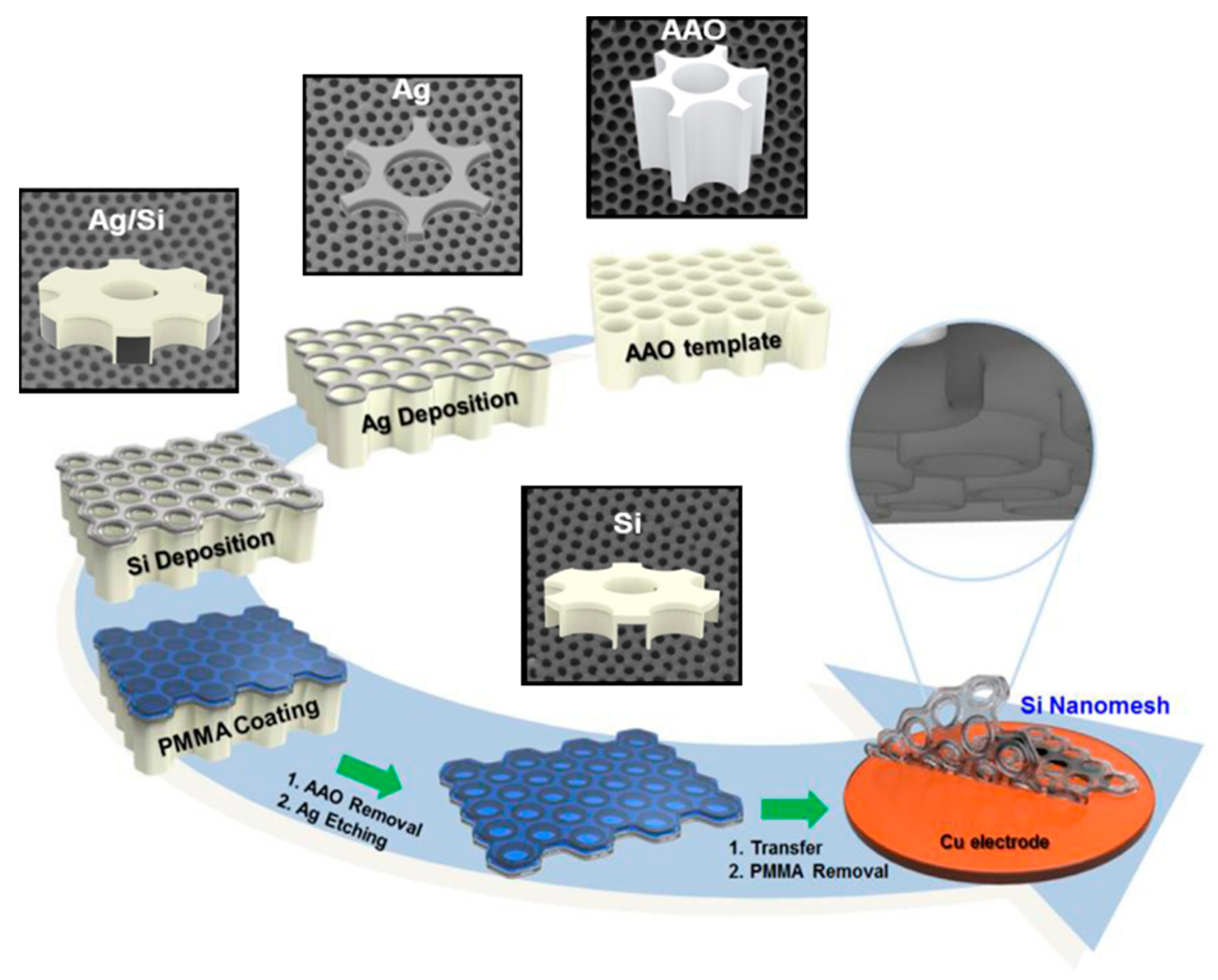
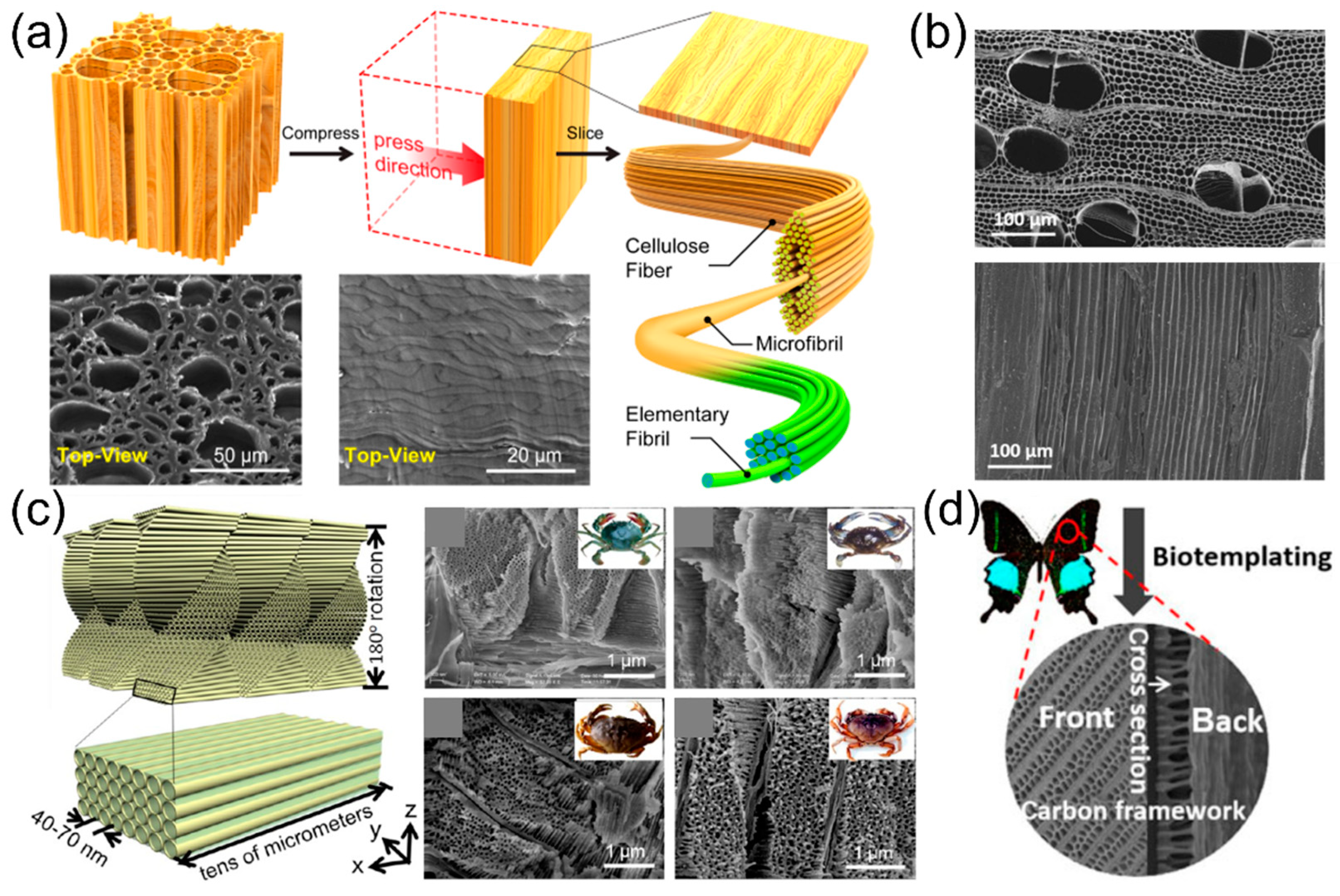
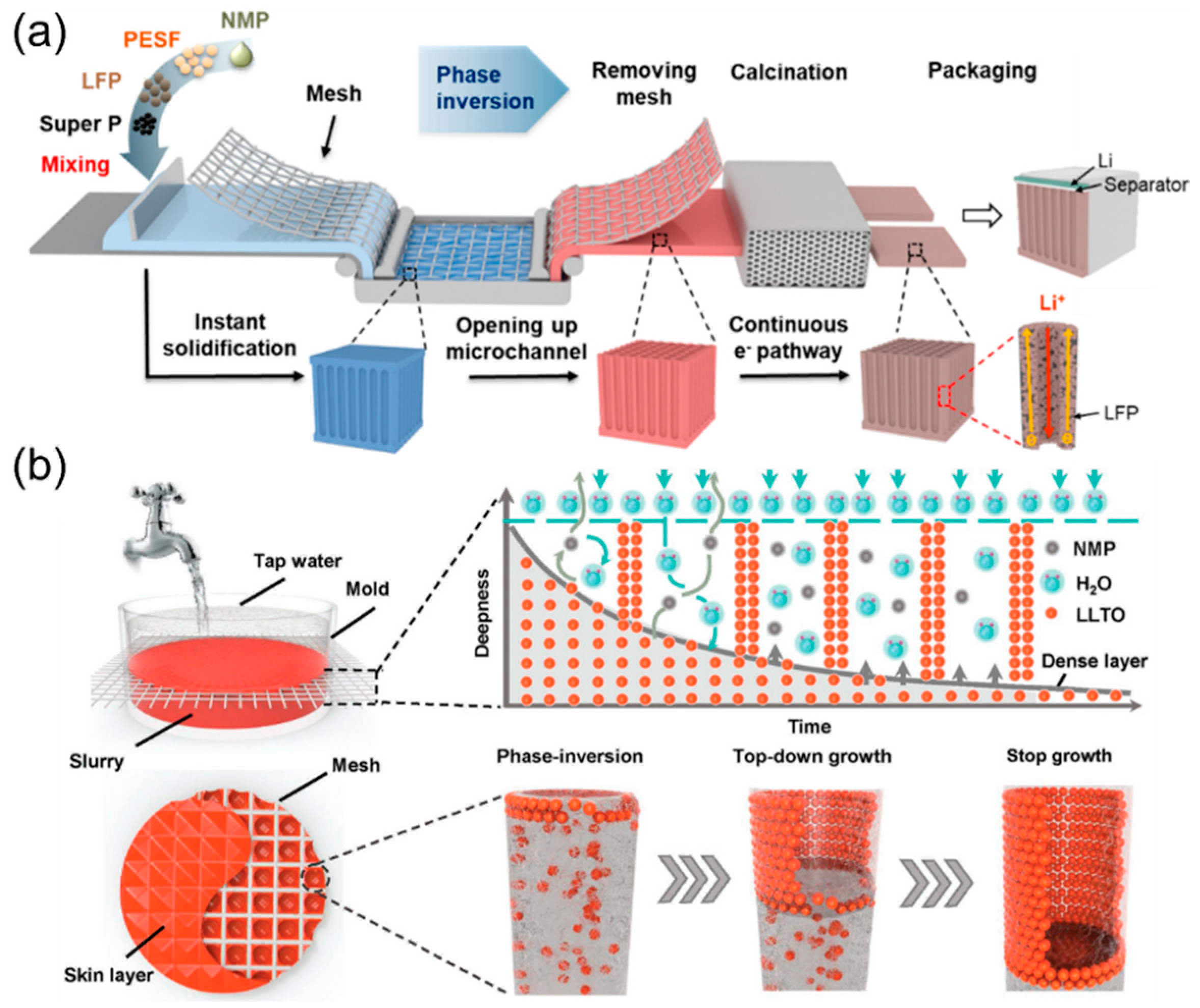



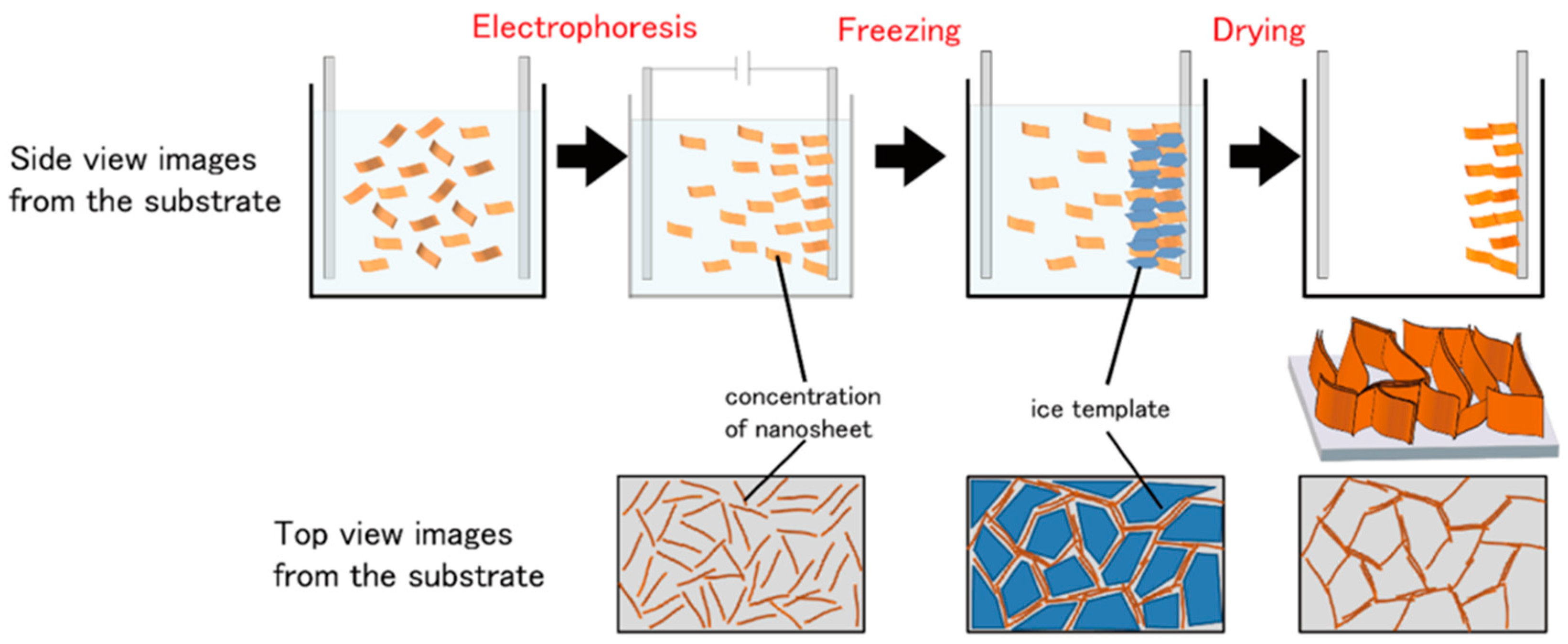
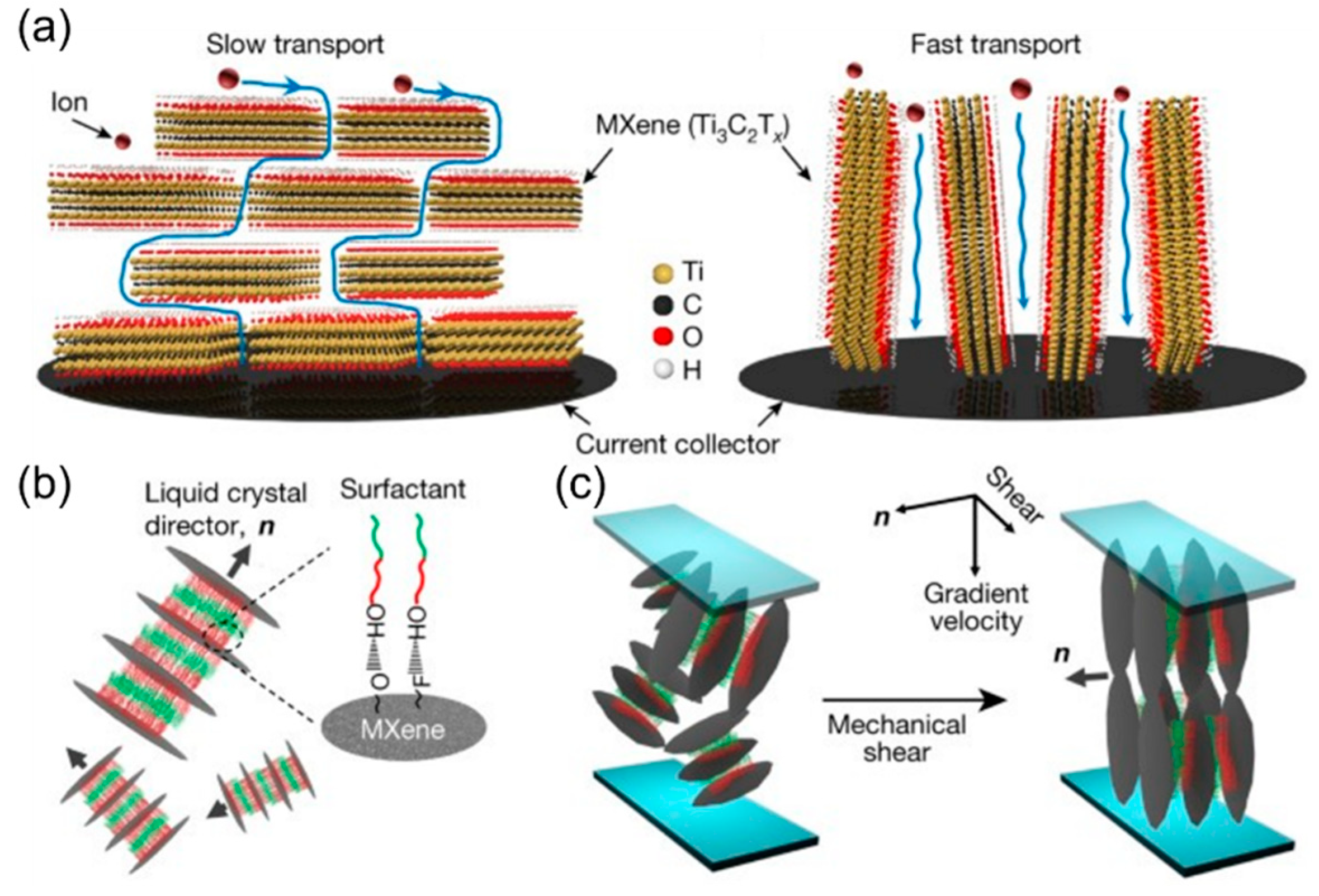


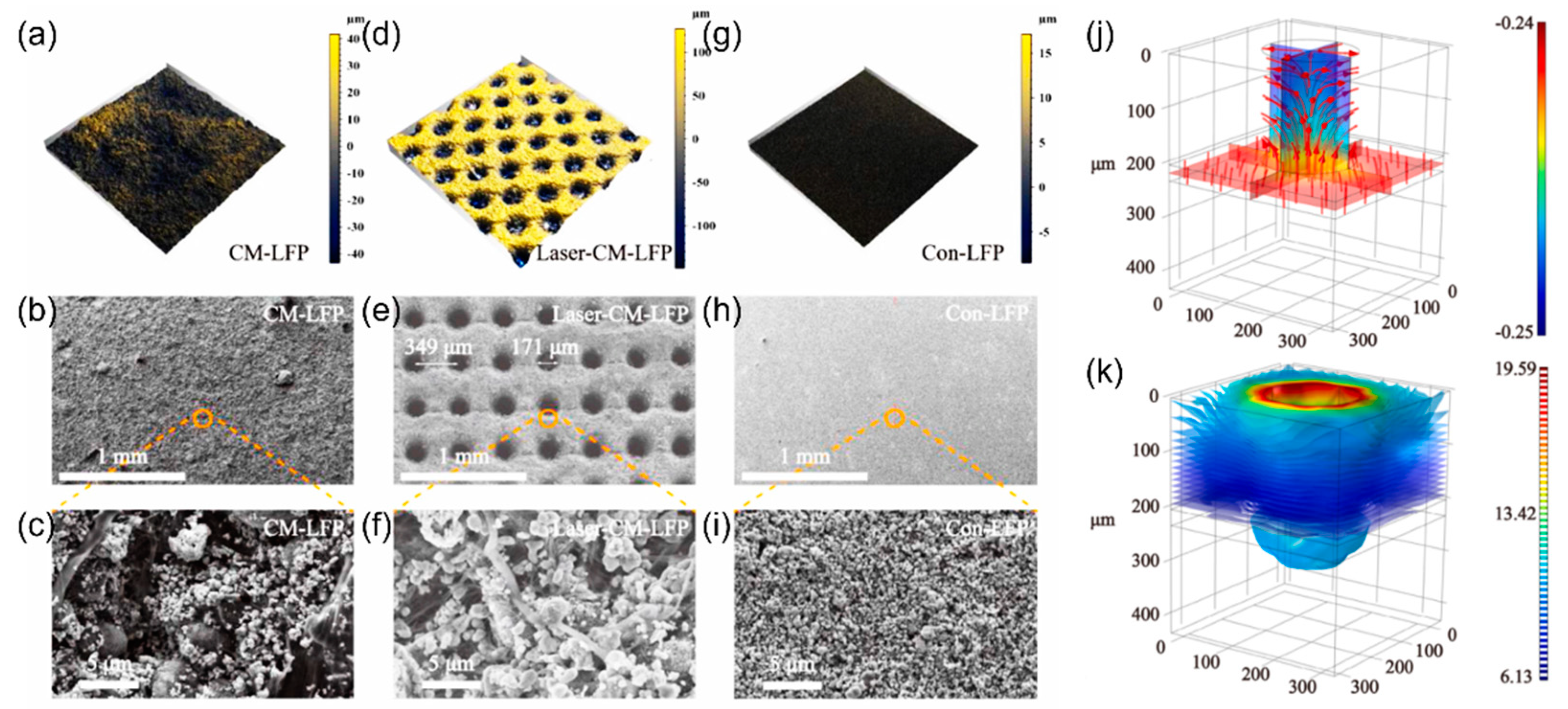


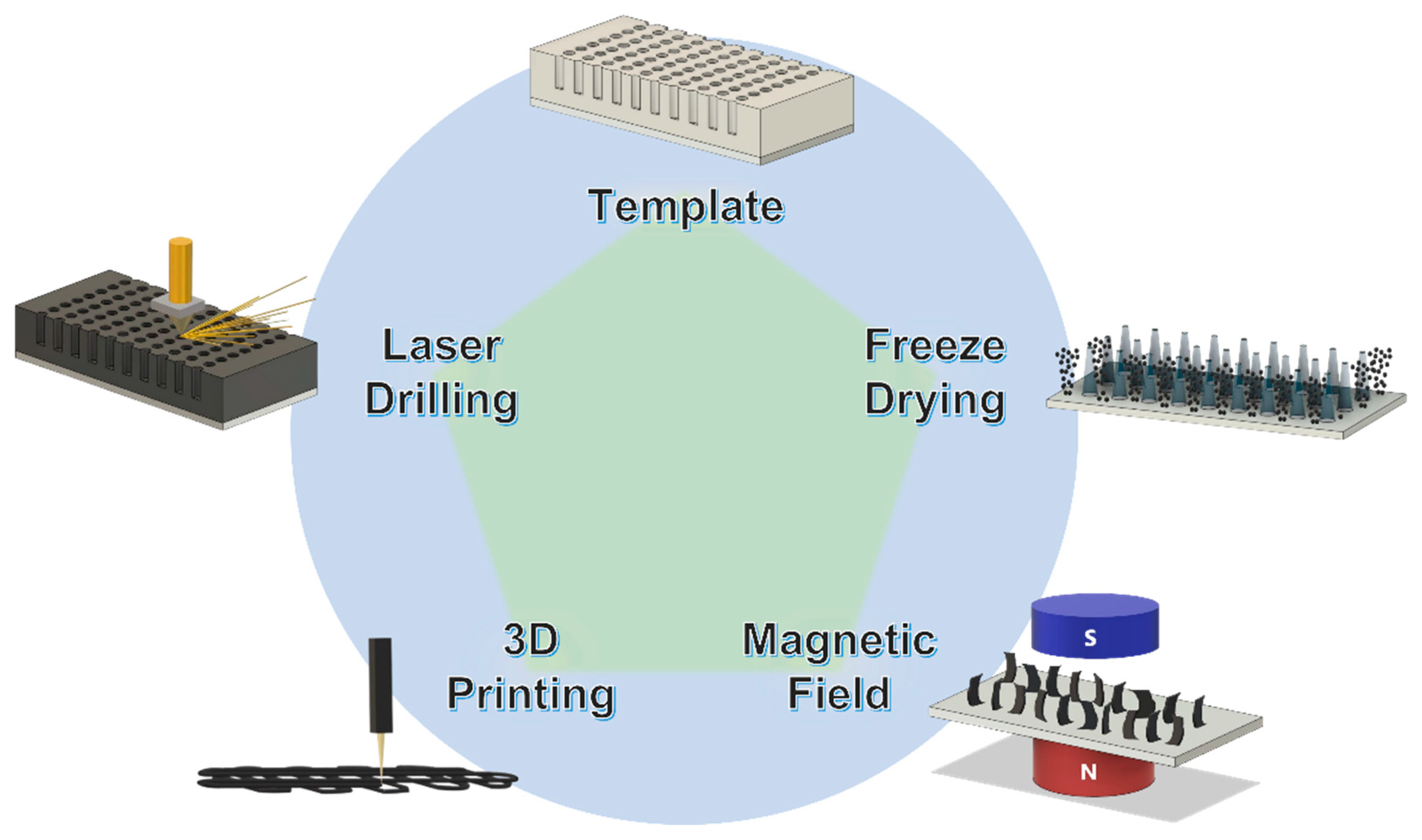
Publisher’s Note: MDPI stays neutral with regard to jurisdictional claims in published maps and institutional affiliations. |
© 2022 by the authors. Licensee MDPI, Basel, Switzerland. This article is an open access article distributed under the terms and conditions of the Creative Commons Attribution (CC BY) license (https://creativecommons.org/licenses/by/4.0/).
Share and Cite
Kang, C.-Y.; Su, Y.-S. Smart Manufacturing Processes of Low-Tortuous Structures for High-Rate Electrochemical Energy Storage Devices. Micromachines 2022, 13, 1534. https://doi.org/10.3390/mi13091534
Kang C-Y, Su Y-S. Smart Manufacturing Processes of Low-Tortuous Structures for High-Rate Electrochemical Energy Storage Devices. Micromachines. 2022; 13(9):1534. https://doi.org/10.3390/mi13091534
Chicago/Turabian StyleKang, Chun-Yang, and Yu-Sheng Su. 2022. "Smart Manufacturing Processes of Low-Tortuous Structures for High-Rate Electrochemical Energy Storage Devices" Micromachines 13, no. 9: 1534. https://doi.org/10.3390/mi13091534
APA StyleKang, C.-Y., & Su, Y.-S. (2022). Smart Manufacturing Processes of Low-Tortuous Structures for High-Rate Electrochemical Energy Storage Devices. Micromachines, 13(9), 1534. https://doi.org/10.3390/mi13091534







